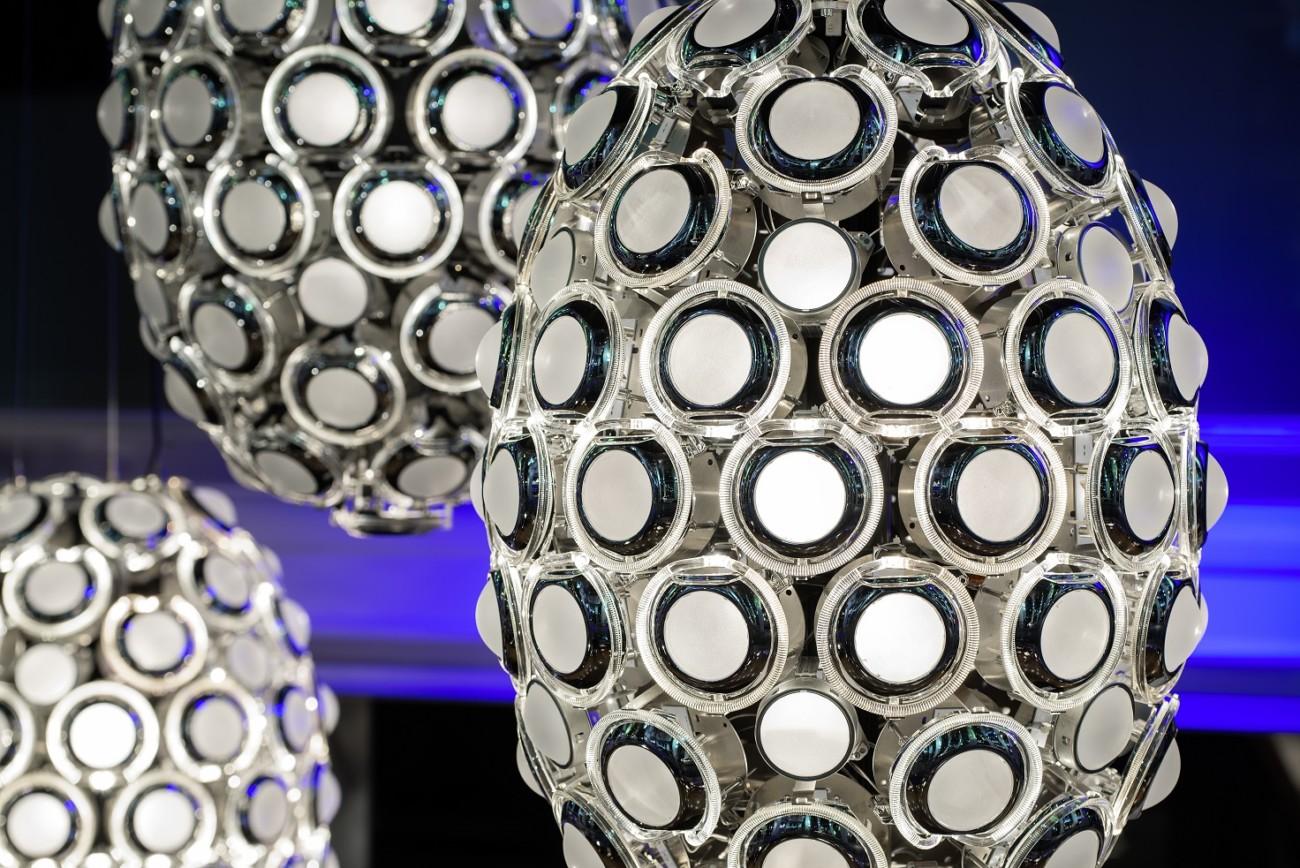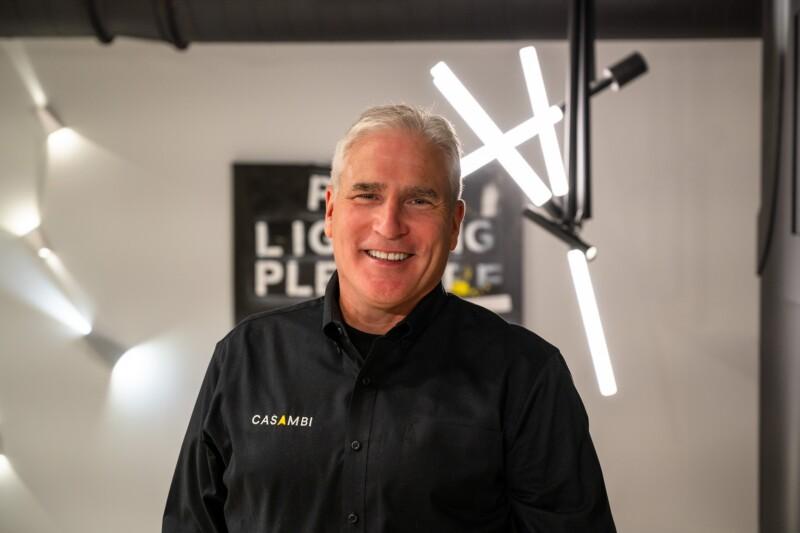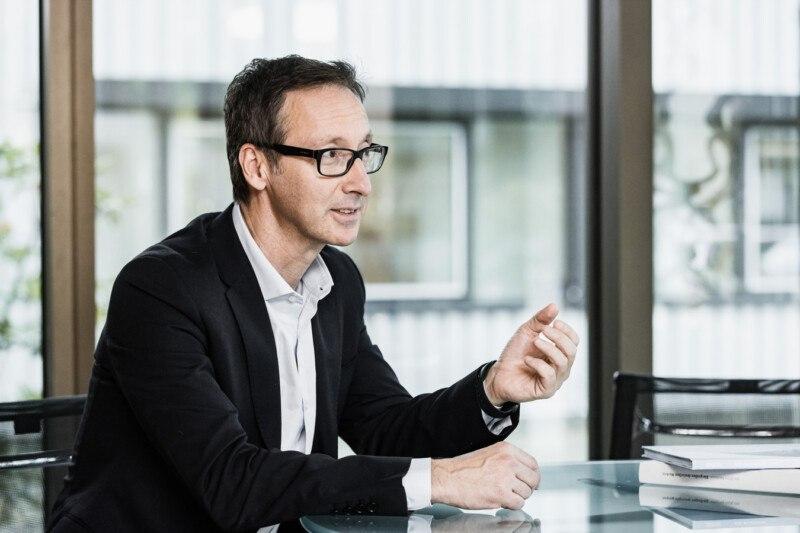Bringing overlooked objects to life: The artistry of Bernhard Dessecker

When you encounter the magical playfulness of Bernhard Dessecker, the lighting design wizard who turns discarded objects into art, you step into a world where creativity knows no bounds and everyday items transform into enchanting sources of fascination through the magic of light.
Within the field of lighting design, there are a select few artists whose creativity and innovation transcend conventional boundaries and infuse a sense of playfulness into their work. One such revered figure is Bernhard Dessecker, a lighting designer and artist who has been captivating audiences with his unique approach for over four decades. With a profound understanding of both traditional craftsmanship and cutting-edge technology, Dessecker has mastered the art of transforming often-unnoticed, everyday objects into vibrant sources of fascination through the magic of light. His ingenious play with objects breathes new life into them, inviting us to see and interact with these once-discarded items in entirely novel and enchanting ways.

From Studio Morsa to Ingo Maurer
Born in Germany, Bernhard began his illustrious career as an interior architect in 1983 at Studio Morsa in the dynamic city of New York. This early experience laid the foundation for his future endeavors and kindled his passion for creating functional and aesthetically pleasing spaces. He later joined the prestigious design team at Ingo Maurer, a top international lighting design company based in Munich, Germany where his dedication and talent quickly earned him the reputation of being Ingo’s right-hand man.
During his time at Ingo Maurer, Dessecker played a crucial role in developing technically challenging and complex light fixtures – such as the Bastardo, the Swingading, the Topolino, the Prototype and many more. In parallel with his work at Ingo Maurer, he managed his own design office, where he brought his creative visions to life through various products and projects across Germany and beyond. From Munich subway stations (in collaboration with Ingo Maurer and team) to Imam Hussein Square in Tehran, his artistic ideas have made their indelible imprints on numerous landmarks.
From semiconductors to artistic brilliance
Over the course of his distinguished career, Dessecker has cultivated extensive technical knowledge in the field of semiconductor technology, particularly LED and OLED. His expertise in this area has led him to share his insights and experiences with audiences around the world and instill them into his own designs, to wizardly effect.
Take his collaboration with BMW to create his Iconic Eyes lamps for Moooi; these reference the appearance of BMW headlights by turning headlight parts into an egg-shaped chandelier covered with eye-like lenses of frosted glass individually lit by LEDs. They can be seen in person at the Bavarian National Museum in Munich Germany, where 11 of the lights have been installed permanently.
Dessecker’s artistic signature is a harmonious blend of practicality and creativity. Whether he is working on large-scale metropolitan subway stations or crafting unique hand-made products, his designs emanate an innovative and sometimes quirky elegance. His lighting fixtures are not just objects; they are works of art that evoke emotion and tell stories, blurring the lines between functionality and imagination.

From discarded to delightful
In recent years, Dessecker has embraced the concept of reclaiming materials. He revitalizes discarded objects he finds, infusing them with a fresh purpose. From an old fishing pole adorned with a glass reflector to an iPhone packaging box turned into a versatile reading light, his artistic prowess knows no bounds. His creations include chandeliers made from mysterious silver-plated vessels found buried in the sand and lamps crafted from metal and magnetized wooden Scrabble tiles, adding an element of playfulness to the lighting experience.
To Bernhard, the act of repurposing materials carries a deeper meaning. It challenges the culture of disposability and encourages a more thoughtful and sustainable approach to design. Each piece he creates becomes a testament to the beauty that can emerge from seemingly forgotten objects. And his work serves as a powerful lesson on the importance of circularity in the lighting industry. As an artist who transforms discarded objects into functional lighting fixtures, he exemplifies the potential for sustainability and creativity to go hand in hand.


A path to a sustainable and playful lighting industry
Lighting companies might well find the idea of adopting and adhering to circularity principles in their work quite daunting due to the need for significant changes in their existing production processes, business models, and supply chains to meet sustainability goals.
Instead of being burdened by the need for circularity, Dessecker’s approach inspires us to see it as an opportunity to unleash our imagination and explore novel ways of achieving sustainability. By reimagining and repurposing materials, we can create lighting designs that not only serve their purpose but also contribute to a circular economy, reducing waste and minimizing our impact on the environment. His journey reminds us that fun and innovation can coexist with sustainability, leading us to a future where every aspect of the lighting industry embraces circular practices and becomes a beacon of hope for a brighter, jollier, and more sustainable world.
Do browse all of Bernhard’s curious light objects, they’ll offer you a glorious escape from the trappings of conventional life.


